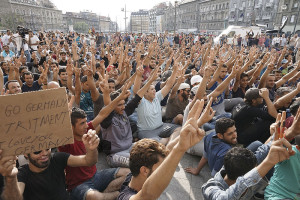Denmark’s Divisive Refugee Policy
Rasmussen, a member of the Liberal Party of Denmark, was elected on his party’s promise to immediately halt the massive influx of refugees from the south. The platform--heavily influenced by the right-wing coalition partner Danish People’s Party (DF)--reflects the growing tide of nationalism within Denmark. The Prime Minister has been outspoken about this nationalism, stating recently, “It is my responsibility to use the tragic situation to find a solution that is in Denmark’s interest.”
However, this nationalist position is not limited to Rasmussen and politicians within his coalition. Rather, the Danish electorate, like its government, favors an isolationist strategy to counter the rising number of refugees attempting to gain entry into Denmark. The DF, which many Danes support, has been growing in popularity since its founding in 1995 and is now the Danish parliament’s second largest party. Recent statements by the DF echo the sentiment of many Danes, who hold that they “will not accept a multi-ethnic transformation of country.”
Many critics have called these stances xenophobic and have observed that such targeted, publicized efforts to create a negative image of the country to outsiders have made nationalism in Denmark essentially self-perpetuating. The early-September Lebanese newspaper advertisements explained that newcomer refugees will see social benefits reduced by up to 50 percent, family reunification rights rejected, strict Danish language requirements enforced, and that rejected asylum seekers will be forced to leave Denmark immediately. Rasmussen has voiced his support for such policies, stating while campaigning, “There is no doubt that this tightening of conditions will give rise to fewer asylum seekers.”
The hope for a comprehensive European response to the refugee crisis hinges on the actions of nationalist parties like those that rule Denmark. Prime Minister Rasmussen’s candidness about the intentions of Danish refugee policy gives rise to polarization in the European Parliament and indicates that the influx of refugees will only rise for countries neighboring Denmark.
A potential resolution to the conflict lies in a referendum set to occur before March 31, 2016 to reconsider Denmark’s “opt-out” clause.

